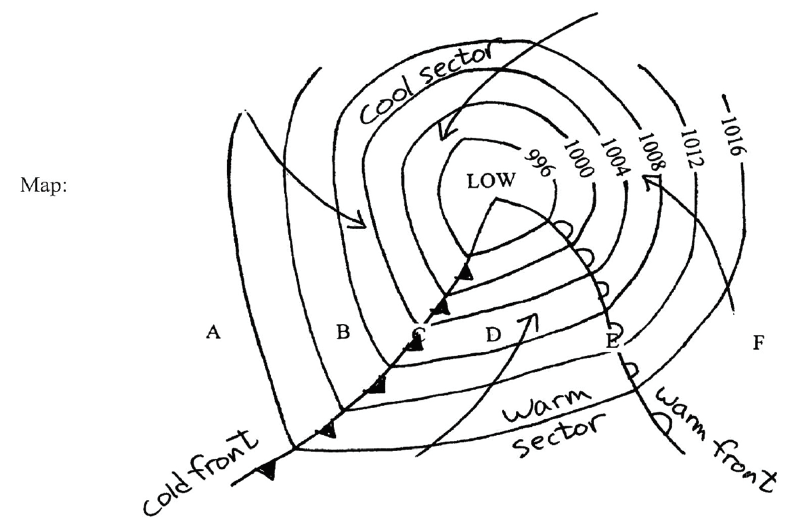What is the most likely wind direction at Point B?
The question is based on this hypothetical weather map in the Northern Hemisphere showing isobars and the positions of a cold front and a warm front (top of map is north). Six locations are marked on the map (points A, B, C, D, E, and F). A cross-section diagram along points A, B, C, D, E, and F is shown below the map.


What will be an ideal response?
From the West or northwest
You might also like to view...
What happens to the pH of a 1M solution of hydrochloric acid, HCl, as carbon dioxide gas is bubbled into it?
A. The pH remains unchanged. Carbon dioxide is unable to affect the pH in the presence of such a concentrated solution of such a strong acid. B. At first, the pH will increase as carbon dioxide ties up the hydrogen ions from the solution. Once the concentration of the resulting carbonic acid becomes greater than 1M, the pH will begin to decrease indicating the presence of more acid. C. The pH increases as the solution becomes more basic since the carbon dioxide continues to tie up more and more of the hydrogen ions as associated carbonic acid molecules. D. The pH decreases as the solution becomes more acidic since carbon dioxide reacts to form carbonic acid thus increasing the overall acid concentration.
What is "direct translation" in GIS data conversion?
What will be an ideal response?
As of 2015, more than 70% of the cost of toxic waste cleanup for most sites has been paid for by
A) increasing taxes in the region affected. B) increased sales taxes in the affected state. C) federal dollars in the Superfund. D) the polluters.
Dry deposition occurs when ____.
A. pollution levels are low B. acidic particulates fall to the ground C. pollutants are released in cold air D. pollution travels a large distance from its source E. acidic snow, rain, or fog reaches the ground